


This page contains information on downloading many types of files from the Internet, including audio clips, documents, PDF files, programs, and pictures. Instructions for downloading files are available for all modern browsers on computers, smartphones, tablets, and Chromebooks. Select a link below to learn more about downloads and downloading files.
To download is to receive data from the Internet to be stored and opened. Downloading should not be confused with copying or saving, which handles files not on the Internet (e.g., copying files to another location or saving a document). Also, a download is not an upload, which is sending a file from one computer to another.
Files on the Internet may contain viruses or malware. Protect your computer by installing an antivirus and anti-malware program and keeping it up-to-date; see: How to update an antivirus program.
After the download is completed, a prompt appears in the upper-right corner of the browser window. Click the downloaded file to open it.

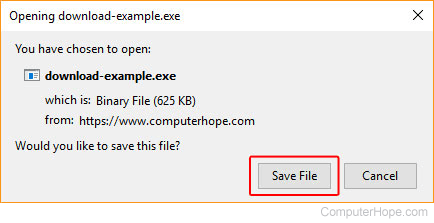
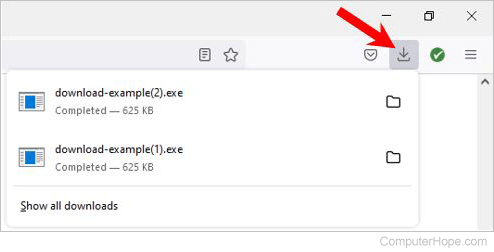
Alternatively, press Ctrl + J to open the Downloads section of the Library.


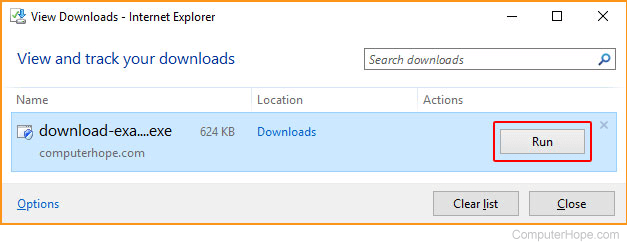
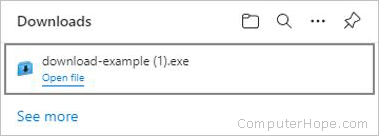


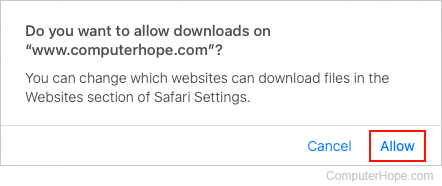

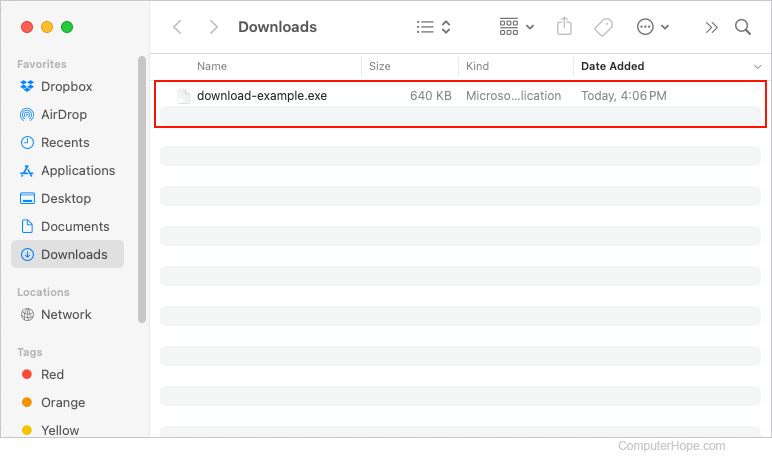

You can download files from a web page on an Android smartphone or tablet or an Apple iPhone or iPad. Select your type of phone or tablet below and follow the instructions.
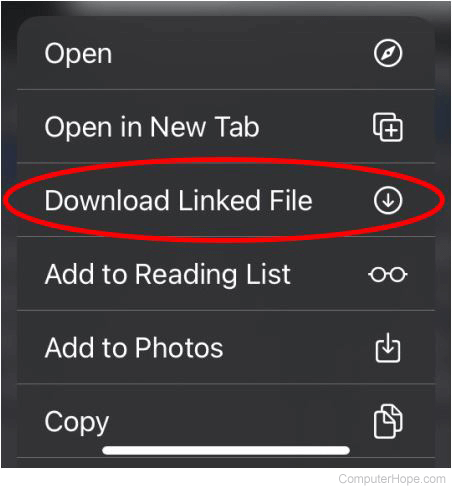
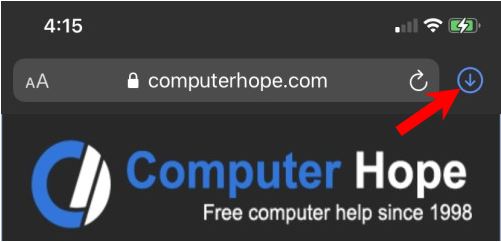
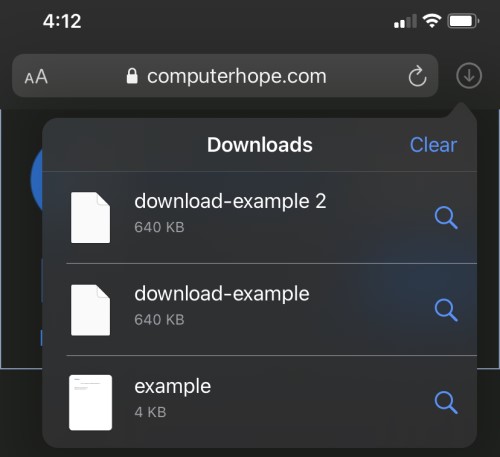
Downloading a file on a Chromebook is similar to downloading on a computer, with slight differences.
You can also press the keyboard shortcut Ctrl + J to view your downloaded files.
Popular download are apps or programs installed on your computer. For Windows computers, these files are often .exe files, and for Apple computers, they are either .dmg or .app files.
Many programs may also be included in a compressed file. If the download file or link ends with .arj, .zip, .tar, or .tgz, see the next section for downloading and extracting compressed files.
Below is an example executable file to run on your Windows computer. This executable file displays the message, "Congratulations, you've successfully downloaded an executable program file from the Computer Hope Website."
Today, most drivers are either included in a compressed file (see next section below) or are contained in a self-extracting executable file.
If you're having trouble figuring out how to install the drivers you have downloaded, look for a readme file with this information. For additional help, use the link below to install drivers on a computer.
Compression techniques reduce file sizes or package several files together. Compressed files may end with a .7z, .arj, .rar, .tgz, or .zip file extension. After they've been downloaded, these files must be decompressed before running or being viewed.
Below is an example compressed file called example.zip. Once this file is downloaded, you'll need to decompress the file, which contains a readme.txt and a download-example.exe file.
Downloading an audio file (e.g., an MP3) from a link is like downloading any other basic file from the Internet. Different downloading techniques must be used for web pages that utilize streaming audio or embedded audio, as explained on the following page.
Downloading a movie file (e.g., an MP4) from a link is similar to all other file downloads. However, you can also right-click the link and choose Save link as, Save target as, or the Save linked content as option. If an embedded movie has an arrow pointing down next to the audio controls, use that link to download the movie. Other streaming movie services that do not have a download link may require additional software to capture the video. The link below has further instructions.
Below is an example link to an MP4 video file. To download it, right-click the file and select Save link as, Save target as, or Save linked content as.
Steps on downloading a YouTube video or its audio are on the following pages.
Any picture or image on the Internet can be saved to your computer (downloaded). For example, the following steps walk you through downloading the Computer Hope logo seen to the right.
Once an image is saved, you may open it with an image editor or another program that supports the image's file format.
You can also copy the image and then paste it into any document or graphics program.
A PDF (Portable Document Format) file can be downloaded like most programs. Upon selecting a download link to a PDF file, most browsers open the PDF contents in the browser window rather than downloading the file. Below are the steps to download a PDF to your computer instead of only viewing it.
You can follow the steps above with the link below to download our PDF example.
Any link pointing to a document, such as those found in Microsoft Word, can download it. Click the following link to download example.doc to your computer to see the process in action.
If the browser is opening the document or the link isn't working, you can also right-click the image and choose Save link as, Save target as, or Save linked content as.
A spreadsheet can be downloaded by clicking any link pointing to the spreadsheet file (.xls, xlsx). Click the link below to download the example.xls file created in Microsoft Excel to your computer to see the process in action.
If the browser is opening the spreadsheet or the link isn't working, you can also right-click the link and choose Save link as, Save target as, or Save linked content as.
Many websites that grab information from a database do not save the data as a .xls, .xlsx, or another spreadsheet file format. Instead, the files are saved as a CSV (Comma-Separated Values) file. These files can also be downloaded in the same way and then imported into a spreadsheet program, like Microsoft Excel or Google Sheets.
By default, any link that points to a text file is opened in the browser. To save a text file to your computer to edit in a text editor, right-click the link and choose Save link as, Save target as, or Save linked content as. You can try this now by right-clicking the link below to download a readme.txt file.